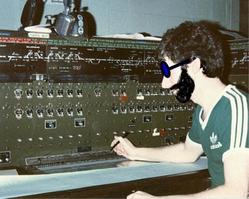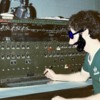This is an interesting question. I have N, HO and O. Only the O is running now. The HO is supposed to be C&O in war time, pulling coal loads to the ports and factories, war material, passenger, troop trains, etc. I think I had more thought about operations with this one, but also just watching long coal drags and flats full of tanks seems cool, too. The original plan was quite elaborate but reality has taken a nasty turn. At one time I had a 40 x 40 space and was going to push it against the wall so I had easy reach. it included a military base and a port. Really over did it.
The N will never be "operational". just seems like to much of a hassle. I do have a John Allen track plan that seems good for that, Santa Fe, SP and UP at San Berdino and the Pass. There is some ability to work a yard or shuffle freight off scene to industries, but I just want to watch that one run. Especially the UP Kato E units and Concor passenger trains, ATSF 4-8-4s with heavyweights and F units also pulling Concor pass sets.
The O, not sure. Where I am now I have a 6 x10 in the living room. The ex was a real PITA about space. The new GF and I have sorta been looking at houses and she only shows me ones with big basements - all for me. May have to keep this one. She gushed over my Christmas layouts. And I volunteered to build one next Christmas at our church and she was a big cheerleader telling the person I was talking to how cool my layouts were. (Yeah dating is fun in your 50s when you have a train layout in your LIVING ROOM. It helps to weed out the potential pains quick, though.)
Kinda hoping for a long 20 to 40 feet straightaway with turns at the end, possibly 2 levels, lotsa running room for 50s era PRR coal drags, Tuscan passengers and local freight. I like the idea of having a what's the term a connection yard to another railroad (NYC and/or N&W) to bring things in from off scene and building trains for local deliveries. And bring them back to go off scene. Of course to do it right you need scenery, but I suspect I may have volunteers, GF and daughter (12 and still enthusiastic). Yards are expensive in real estate especially in O. But I'd like to keep a much on the layout as possible so sidings and a yard are a must.
Need to think this through carefully I guess.







